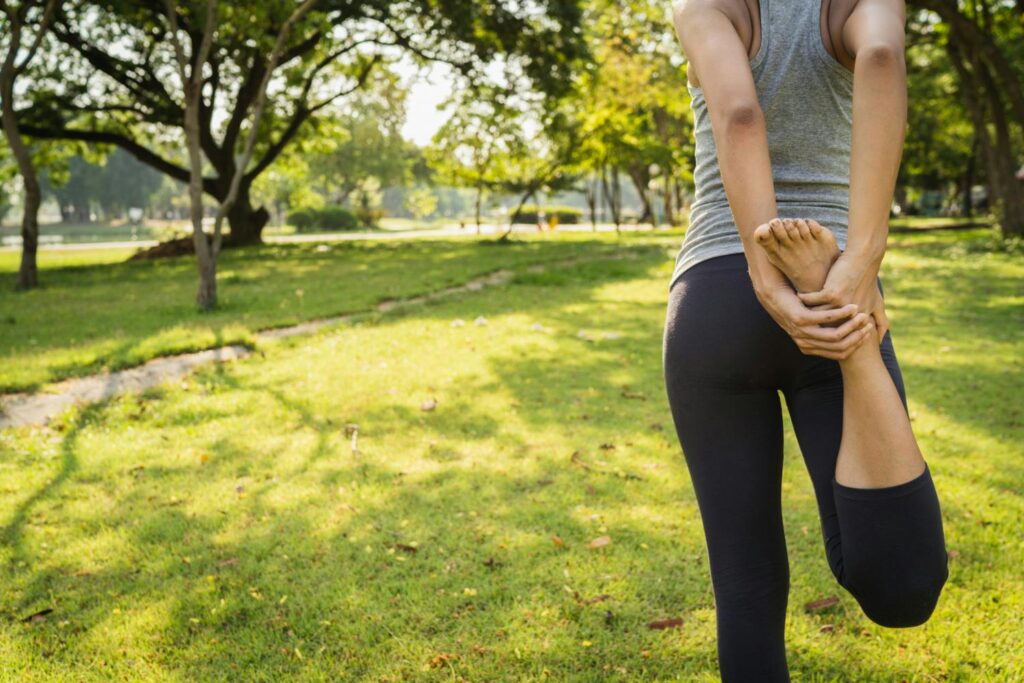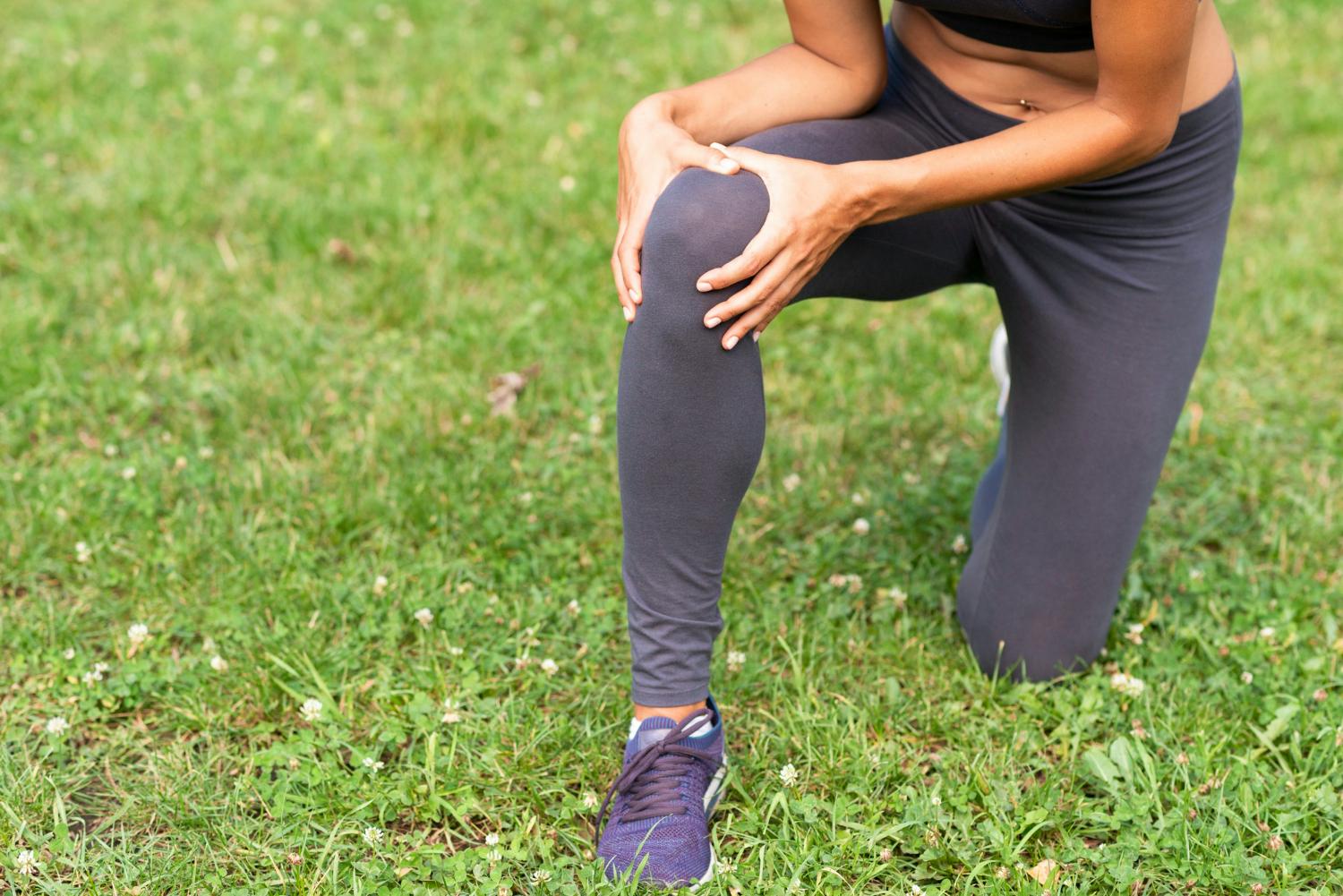Do you experience sharp pain behind your knee when bending, making daily activities a challenge? Understanding the causes and relief strategies for this type of pain is crucial to finding the right solution. Knee pain when bending can stem from a variety of reasons, including injuries, medical conditions, or overuse. Knowing the potential causes and effective relief strategies can help alleviate discomfort and improve your quality of life.
The knee is one of the most complex and vulnerable joints in the body, consisting of various structures like bones, ligaments, tendons, and cartilage. When you experience pain behind the knee, it can be a result of issues with any of these components, leading to discomfort and limitations in movement. Identifying the specific cause of your knee pain is the first step in finding the appropriate treatment and relief.
In this article, we will delve into the common causes of pain behind knee when bending, the symptoms to watch out for, how to diagnose it, and various relief strategies, including home remedies, physical therapy, and medical interventions. Additionally, we will provide tips for preventing knee pain and knowing when to seek medical help. Let’s explore the world of knee pain behind the knee and find effective solutions to address it.
What is Knee Pain and Its Causes
Knee pain, particularly pain behind the knee when bending the leg, also known as posterior knee pain, can significantly disrupt everyday activities. This pain may originate from knee joint complications, including meniscus tears, which involve the cartilage that stabilizes and cushions the thigh bone from the shin bone. Severe pain behind the knee when bending the leg might indicate a torn ligament, such as the posterior cruciate ligament, or conditions like deep vein thrombosis—blood clots that necessitate immediate medical attention.
Rheumatoid arthritis, a chronic inflammatory disorder, can also target the knee, causing pain and swelling. Meanwhile, Osgood-Schlatter disease typically affects adolescents during growth spurts, causing tenderness and swelling below the knee. Hamstring injuries to the muscles along the back of the thigh might refer pain to the knee area, especially during physical activity.
Knee Anatomy
The knee is a complex joint that connects the thigh bone (femur) to the shin bone (tibia). At its core, the knee consists of bones, cartilage, ligaments, and tendons that cooperate to provide both stability and flexibility.
Bones:
- Femur (thigh bone)
- Tibia (shin bone)
- Patella (kneecap)
- Fibula (smaller bone next to tibia)
Cartilage:
- Meniscus: C-shaped pads between femur and tibia
- Articular Cartilage: Covers the ends of the femur and tibia and the back of the patella
Ligaments (Connective Tissue):
- Anterior Cruciate Ligament (ACL)
- Posterior Cruciate Ligament (PCL)
- Medial Collateral Ligament (MCL)
- Lateral Collateral Ligament (LCL)
Tendons (Connective Tissue):
- Patellar Tendon: Connects the patella to the tibia
- Quadriceps Tendon: Connects the quadriceps muscle to the patella
Muscles:
- Quadriceps: Front of the thigh
- Hamstrings: Back of the thigh
Other Structures:
- Bursae: Fluid-filled sacs that cushion the knee
- Synovial Membrane: Encloses the joint and secretes synovial fluid for lubrication
This structure allows the knee to support the body’s weight, enable movement such as walking, running, and jumping, and is pivotal in maintaining balance and stability.
What Causes Pain Behind Knee When Bending?

Pain behind the knee when bending can stem from various medical conditions and incidents. This discomfort can be an indicator of something as simple as overexertion or a symptom of a more serious condition that requires medical attention. Identifying the cause is crucial, as it can range from inflammation to severe knee joint damage. Common reasons people say “It hurts when I bend my knee” include pain due to various causes:
Baker’s Cyst
A Baker’s cyst, or popliteal cyst, manifests as a fluid-filled sac behind the knee, leading to pain and tightness that may worsen when bending the knee. These cysts are often a byproduct of another issue within the knee, such as arthritis or meniscus tears, as they form when excess synovial fluid accumulates in the back of the knee joint.
Deep Vein Thrombosis (DVT)
DVT occurs when a blood clot forms in a deep vein of the leg, causing swelling, warmth, and pain behind the knee. This condition demands prompt medical attention, as blood clots can become life-threatening if they travel to the lungs, leading to a pulmonary embolism.
Leg Cramps
Sudden, sharp pain behind the knee during bending can be due to muscle cramps. These involuntary contractions, especially in the hamstring muscles, can occur due to muscle fatigue or dehydration.
Arthritis
Degenerative changes in the knee joint, known as Osteoarthritis, result in pain and stiffness. Alternatively, Rheumatoid arthritis is an autoimmune disorder that causes inflammatory joint pain. Both types can produce severe pain behind the knee, exacerbated by bending.
Knee Injury
Knee injuries, a frequent cause of posterior knee pain, can include ligament sprains, torn cartilage, calf muscle tear, hyperextension of the knee, hamstring tendonitis, and complications after knee surgery. These injuries often result from physical activity or direct trauma to the knee, including the impact and rehabilitation process.
Common Symptoms
When discussing the pain experienced behind the knee, there are several common symptoms that patients frequently report. These include:
- Swelling or tightness: Swelling in the knee area can compromise mobility and result in a tight sensation, especially when the knee is bent.
- Warmth or redness: This can indicate inflammation or, in severe cases, an infection or the presence of a blood clot.
- Difficulty walking: Pain can make weight-bearing activities uncomfortable, affecting one’s ability to walk normally.
- Stiffness after periods of rest: Stiffness can be a sign of degenerative conditions such as osteoarthritis.
- ‘Locking’ of the knee joint: This can signify meniscus tears or loose bodies within the joint.
- Reduced range of motion: Swelling and pain might limit the knee’s ability to fully bend or straighten.
- Sound of popping or snapping: Audible noises when moving the knee could suggest a mechanical problem within the joint.
These symptoms necessitate a medical evaluation to discern the underlying cause and the appropriate treatment plan. If you’re experiencing these issues, consult a healthcare professional for a complete assessment.
How to Diagnose Pain Behind Knee When Bending
To diagnose pain experienced behind the knee when bending, healthcare professionals consider various factors:
Medical History Review
- Initially, a patient’s medical history is examined, identifying any past knee injuries or underlying chronic conditions like rheumatoid arthritis or liver disease.
Physical Exam
- A thorough physical examination of the knee is conducted. This includes palpation to pinpoint swelling or tenderness, assessment of the range of motion, and observation of walking patterns.
Imaging Tests
- X-rays: Reveal bone fractures or degenerative joint disease.
- MRI: Provides detailed images of soft tissues, useful for detecting meniscus tears, ligament injuries, and other knee problems.
- Ultrasound: Helps in identifying fluid-filled sacs or popliteal cysts.
Additional Tests
- If there is suspicion of a blood clot or deep vein thrombosis, a D-dimer test or ultrasound might be ordered.
Early medical attention for severe pain or any significant change in symptoms is crucial. Nonsteroidal anti-inflammatory drugs (NSAIDs) may be recommended for initial pain management but follow-up with a healthcare professional is essential for a proper diagnosis.
Relief Strategies for Pain Behind Knee When Bending
Finding relief from pain behind the knee when bending is essential for continuing everyday activities and maintaining mobility. There are several strategies, ranging from home remedies to medical intervention, including dry needling for knee pain, that can aid in alleviating discomfort. While some measures can be initiated at home, others require professional guidance.
Home Remedies
For immediate at-home care, individuals can utilize simple techniques as a first line of defense against knee pain:
- Rest: Limit physical activity that aggravates the knee joint.
- Ice: Apply ice to reduce swelling and numb sharp pain.
- Compression: Use an elastic bandage or knee sleeve to provide support.
- Elevation: Prop the leg up to decrease swelling.
Incorporating these steps can often provide temporary relief and help in managing the symptoms until further treatment can be sought.
Physical Therapy
If home remedies don’t provide sufficient relief, physical therapy may be recommended:
- Strengthening Exercises: To bolster the support around the knee joint, particularly targeting the hamstring muscles and quadriceps.
- Flexibility Routines: Gentle stretching can improve the range of motion and reduce tension in the knee.
- Hands-On Therapy: Physical therapists can employ techniques like massage to manage pain and swelling.
Physical therapy aims to restore function and decrease pain through a personalized regimen tailored to the individual’s specific knee condition.
Medical Intervention
When conservative approaches are insufficient, medical intervention might be necessary:
- Medication: Nonsteroidal anti-inflammatory drugs (NSAIDs) can be used to manage inflammation and pain.
- Injections: Corticosteroids or hyaluronic acid injections might be administered to alleviate inflammation and lubricate the knee joint.
- Surgery: Surgical options include repairing or removing damaged tissue that may be causing pain, such as meniscus tears or torn ligaments.
Before resorting to surgery, a medical professional would likely explore all other conservative measures. It’s imperative to consult a healthcare provider for a proper diagnosis and treatment plan tailored to the underlying cause of the pain.
Tips to Prevent Pain Behind Knee When Bending

Keeping your knees healthy and pain-free is vital for mobility and comfort during everyday activities. Here are strategies to prevent discomfort behind the knee when bending:
- Maintain a healthy weight: Less pressure on your knee joints minimizes the risk of injury.
- Warm-up before physical activity: Engage in gentle stretching to prepare your muscles.
- Strengthen leg muscles: Focus on exercises for the hamstring and quadriceps.
- Wear proper footwear: Use shoes that provide good support and fit well.
- Avoid overdoing it: Listen to your body and don’t push beyond your limits.
- Take breaks: Regular rest periods prevent excessive strain on your knees.
Use these strategies consistently to reduce the risk of knee pain and orthopedic injuries prevention. Implementing prevention techniques for orthopedic injuries is key to minimizing the likelihood of knee discomfort. Remember, if knee pain persists or interferes with daily life, consult a healthcare provider for an accurate diagnosis and appropriate care.
When to Seek Medical Help
Knee pain is not uncommon, but certain signs indicate a need for medical attention. If you’re experiencing severe pain, unable to bear weight, or notice swelling, redness, and warmth around the knee joint, it’s time to consult a healthcare professional. Meniscus tears, ruptured ligaments, and fluid-filled sacs can cause significant discomfort and frequently require a physical exam.
Sudden pain accompanied by a popping sensation could indicate a torn ligament or cartilage. A deep, throbbing pain, especially when you’re inactive, might suggest blood clots or deep vein thrombosis. If pain develops or worsens during everyday activities, don’t delay seeking advice.
In cases where home treatments like rest, ice, or nonsteroidal anti-inflammatory drugs don’t offer relief, or if you have a history of conditions like rheumatoid arthritis or liver disease, medical evaluation is crucial. A thorough medical history and examination will be pivotal in addressing the underlying cause of your knee pain.
Be Ready Performance Therapy Can Help You
If you’re struggling with any of the common symptoms like posterior knee pain or discomfort during physical activity, Be Ready Performance Therapy is your go-to. Our expert therapists specialize in addressing knee injuries.
We focus on a personalized approach, taking into account your medical history and symptoms. Whether it’s sharp pain that points to a meniscus tear or you’re experiencing the annoyance of a popliteal cyst, our tailored therapy sessions are designed to reduce pain and enhance your everyday activities. Offering strategies from physical rehab exercises to advice on properly using an elastic bandage, we are here to help you return to your best.
Don’t let knee pain hold you back. Contact Be Ready Performance Therapy and take the first step towards a more comfortable and active life.
Conclusion
Experiencing pain behind the knee can be concerning and may be indicative of various medical conditions. It’s crucial to pay attention to the symptoms you’re encountering, as they can offer insights into the underlying cause. Whether it is due to injuries in the knee joint, such as meniscus tears and ligament damage, or conditions like rheumatoid arthritis, prompt medical attention is essential for appropriate management and relief.
What does it mean if the back of your knee hurts when you bend it?
Pain in the back of the knee upon bending can point to several potential issues. Hamstring muscles running along the back of the thigh may be strained or injured, causing discomfort. Alternatively, posterior knee pain can be a symptom of fluid-filled sacs, known as Baker’s cysts or popliteal cysts, which may develop due to excess synovial fluid.
Other causes might include a torn ligament, such as the posterior cruciate ligament, or damage to the cartilage. Understanding the specific nature of your pain is crucial, and a physical exam by a healthcare professional will help diagnose the cause.
Should I be worried about pain behind knee?
While experiencing pain behind the knee is a common symptom, one shouldn’t ignore it. Conditions like deep vein thrombosis, which involves blood clots, can manifest as severe pain and require immediate medical attention. Similarly, chronic conditions such as rheumatoid arthritis might also present with this type of pain. It’s always wise to consult with healthcare providers to rule out serious concerns and to receive the necessary care.
How do you fix knee pain behind the knee?
The approach to addressing knee pain behind the knee varies based on the underlying cause. Nonsteroidal anti-inflammatory drugs (NSAIDs) can provide temporary relief for inflammation and pain. In cases of minor injuries, rest, the application of an elastic bandage, and ice might be recommended.
For more severe cases, such as meniscus or ligament tears, professional medical treatment might include physical therapy, custom-made orthotics, or even surgery. Ensuring regular physical activity and strength training can also help prevent future knee injuries. Consulting professionals for a tailored treatment plan is the best course of action to fix knee pain effectively.


